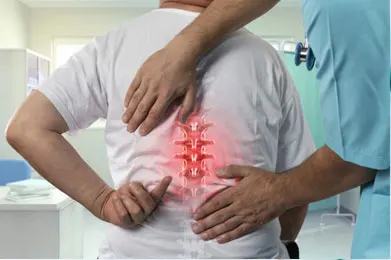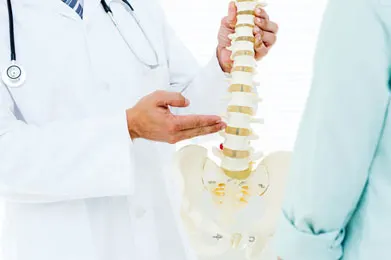Spinal Cord Injury
A spinal cord injury usually begins with a sudden, traumatic blow to the spine that fractures or dislocates vertebrae. . Instead, an injury is more likely to cause fractures and compression of the vertebrae, which then crush and destroy axons - extensions of nerve cells that carry signals up and down the spinal cord between the brain and the rest of the body. Spinal cord injury effects vary according to the type and level of spinal cord injury, and can be sorted into two main types: Complete and Incomplete Spinal Cord Injury

Complete spinal cord injury, there is no function below the "neurological" level, defined as the lowest level that has intact neurological function. If a person has some spinal injury level below which there is no motor and sensory function, the injury is said to be a complete spinal cord injury.
Incomplete spinal cord injury there is no function below the "neurological" level, defined as the lowest level that has intact neurological function. If a person has some spinal injury level below which there is no motor and sensory function, the injury is said to be a complete spinal cord injury.
Extensive research has been carried out on how stem cells can help in the spinal cord injury treatment.
The present standard of care for SCI is methylprednisolone and/or decompression but they have only marginal benefits. Many experimental studies have suggested that the transplantation of bone marrow stem cells (BMSCs) promote functional improvements after SCI because bone marrow derived mesenchymal stem cells (MSCs) have the capacity to differentiated into neurons (oligodendrites, astrocytes) and glial cells after injecting at the injury site.

The implantation of autologous bone marrow stem cells (BMSCs) is safe and no reporting of complication or adverse effects. For obtaining a high local stem cell concentration at the injured site, we use a new route of transplantation by combining both via Intrathecally and via Laminectomy (injecting the cells at multiple sites into the injured area) so that bone marrow stem cells can reach at the necessary target to fulfill their niche and promote the endogenous repair with better results in acute and chronic stages also.
Physiotherapy is one of the part of stem cell therapy. Both paraplegics and quadriplegics should have some kind of physiotherapy to help maximize their potential and to help teach techniques which make everyday life easier. Rehabilitation and physiotherapy provides enhanced environment to make stem cell more functional by helping the cell migrating and proliferation fast.
